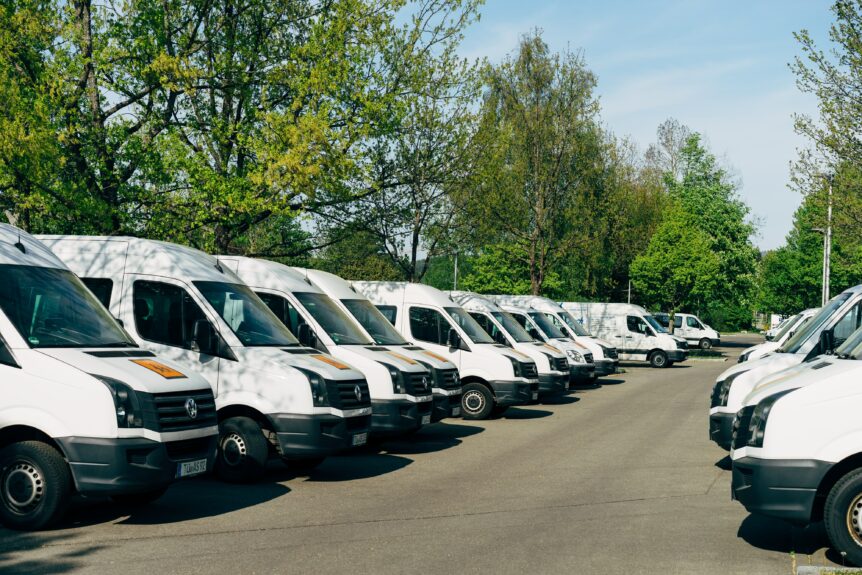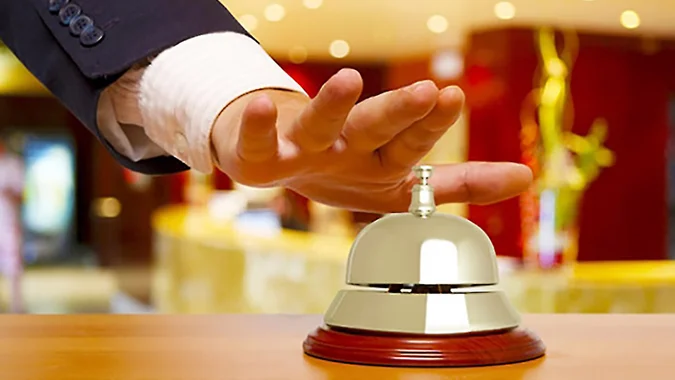While there are national delivery services, such as USPS, FedEx and UPS, people often need packages delivered to nearby locations in a shorter time frame than these services are able to provide. A delivery service provides fast, often same-day delivery, within a particular area. A service may specialize in a specific type of delivery, such as delivering food, or it might deliver all kinds of packages.
Learn how to start your own Delivery Service and whether it is the right fit for you.
Start a delivery service by following these 10 steps
- Plan your Delivery Service
- Form your Delivery Service into a Legal Entity
- Register your Delivery Service for Taxes
- Open a Business Bank Account & Credit Card
- Set up Accounting for your Delivery Service
- Get the Necessary Permits & Licenses for your Delivery Service
- Get Delivery Service Insurance
- Define your Delivery Service Brand
- Create your Delivery Service Website
- Set up your Business Phone System
We have put together this simple guide to starting your delivery service. These steps will ensure that your new business is well planned out, registered properly and legally compliant.
STEP 1: Plan your business
A clear plan is essential for success as an entrepreneur. It will help you map out the specifics of your business and discover some unknowns. A few important topics to consider are:
- What will you name your business?
- What are the startup and ongoing costs?
- Who is your target market?
- How much can you charge customers?
Luckily we have done a lot of this research for you.
What will you name your business?
Choosing the right name is important and challenging. If you don’t already have a name in mind, visit our How to Name a Business guide or get help brainstorming a name with our Delivery Service Name Generator
If you operate a sole proprietorship, you might want to operate under a business name other than your own name. Visit our DBA guide to learn more.
When registering a business name, we recommend researching your business name by checking:
- Your state’s business records
- Federal and state trademark records
- Social media platforms
- Web domain availability.
It’s very important to secure your domain name before someone else does.
What are the costs involved in opening a delivery service?
A delivery business’ largest startup cost is the acquisition of a suitable vehicle. A vehicle doesn’t need to be fancy, but it must be reliable. Such a vehicle usually costs several thousand dollars, at least.
The second-largest startup cost is often insurance. Delivery businesses might need commercial auto insurance, and they may want insurance for the packages being delivered. Without the proper insurance coverage, the business may be responsible for reimbursing any customers whose packages are damaged en route.
The other startup costs are minimal, often totaling only a few hundred dollars. These include any fuel, equipment costs (e.g. for a hand truck and ratcheting straps), licensure fees and marketing expenses. A cell phone is also needed to make calls, and most business owners rely on a computer as well.
Business owners who want to keep their upfront costs as small as possible can use a personal vehicle until the business’ profits support purchasing a different one. They also can use free marketing strategies, such as door-to-door marketing and social media marketing. Fuel can’t be avoided, but only a little is needed to get a business started. Revenue from the first delivery can be used to purchase more fuel for subsequent deliveries, which will generate more revenue.
What are the ongoing expenses for a delivery service?
The main ongoing expenses for a delivery service business include vehicles’ maintenance and depreciation, fuel costs and insurance premiums. All of these should be considered when determining what to charge.
Who is the target market?
A delivery service business’ ideal customer is a business that needs to make lots of quick, local deliveries. Partnering with local flower shops, cake shops and pizza places can provide steady business.
How does a delivery service make money?
A delivery service makes money by charging customers for deliveries made.
How much can you charge customers?
A few different factors go into how much delivery service businesses charge. A typical delivery charges may include a mileage charge of $0.50 to $2.50 per mile, with longer deliveries tending toward the higher end of the range, and a fuel surcharge of 15 percent. Deliveries that take longer than normal may be charged on an hourly rate rather than a distance-based rate.
There may be additional fees assessed for waiting, rush orders, after-hours deliveries, and heavy or oversized packages.
How much profit can a delivery service make?
A national survey of couriers found that the average deliverer makes $34 per hour. According to the survey, most work part-time by choice. Working 40 hours a week at this rate would provide a weekly paycheck of $1,360.
How can you make your business more profitable?
A delivery service business can generate more revenue by investing in more fuel-efficient vehicles. Although this won’t increase revenue, it will greatly reduce operating expenses because fuel is one of the biggest ongoing expenses. The net result will be an increase in profitability.
STEP 2: Form a legal entity
The most common business structure types are the sole proprietorship, partnership, limited liability company (LLC), and corporation.
Establishing a legal business entity such as an LLC or corporation protects you from being held personally liable if your delivery service is sued.
STEP 3: Register for taxes
You will need to register for a variety of state and federal taxes before you can open for business.
In order to register for taxes you will need to apply for an EIN. It’s really easy and free!
There are specific state taxes that might apply to your business. Learn more about state sales tax and franchise taxes in our state sales tax guides.
STEP 4: Open a business bank account & credit card
Using dedicated business banking and credit accounts is essential for personal asset protection.
When your personal and business accounts are mixed, your personal assets (your home, car, and other valuables) are at risk in the event your business is sued. In business law, this is referred to as piercing your corporate veil
Open a business bank account
Besides being a requirement when applying for business loans, opening a business bank account:
- Separates your personal assets from your company’s assets, which is necessary for personal asset protection.
- Makes accounting and tax filing easier.
Get a business credit card
Getting a business credit card helps you:
- Separate personal and business expenses by putting your business’ expenses all in one place.
- Build your company’s credit history, which can be useful to raise money later on.
STEP 5: Set up business accounting
Recording your various expenses and sources of income is critical to understanding the financial performance of your business. Keeping accurate and detailed accounts also greatly simplifies your annual tax filing.
Make LLC accounting easy with our LLC Expenses Cheat Sheet.’
STEP 6: Obtain necessary permits and licenses
Failure to acquire necessary permits and licenses can result in hefty fines, or even cause your business to be shut down.
State & Local Business Licensing Requirements
Certain state permits and licenses may be needed to operate a delivery service. Learn more about licensing requirements in your state by visiting SBA’s reference to state licenses and permits
Vehicle Registration
Businesses are required to register vehicles which will travel across state lines for commercial purposes. Check here for a list of state requirements.
.
STEP 7: Get business insurance
Just as with licenses and permits, your business needs insurance in order to operate safely and lawfully. Business Insurance protects your company’s financial well being in the event of a covered loss.
There are several types of insurance policies created for different types of businesses with different risks. If you’re unsure of the types of risks that your business may face, begin with General Liability Insurance. This is the most common coverage that small businesses need, so it’s a great place to start for your business.
Another notable insurance policy that many businesses need is Workers’ Compensation Insurance. If your business will have employees, it’s a good chance that your state will require you to carry Workers’ Compensation Coverage.
STEP 8: Define your brand
Your brand is what your company stands for, as well as how your business is perceived by the public. A strong brand will help your business stand out from competitors.
If you already have a logo, you can also add it to a QR code with our Free QR Code Generator. Choose from 13 QR code types to create a code for your business cards and publications, or to help spread awareness for your new website.
How to promote & market a delivery service
Two of the most effective ways of marketing a delivery service business include putting signs on the vehicle used for deliveries and going to highly desirable locations for potential customers (such as florists and pizzerias) and requesting to advertise at, and even partner with, these businesses. Many other free and inexpensive advertising methods, like creating a website, posting on social media and putting up flyers, can also be useful.
How to keep customers coming back
A delivery service can attract customers by promising fast delivery times. After all, this is one of the main reasons why people use local courier services rather than national companies.
Moreover, creating an incentive for customers to refer friends and family, like offering a reduced or free delivery, will ensure you build a larger customer base.
STEP 9: Create your business website
After defining your brand and creating your logo the next step is to create a website for your business.
While creating a website is an essential step, some may fear that it’s out of their reach because they don’t have any website-building experience. While this may have been a reasonable fear back in 2015, web technology has seen huge advancements in the past few years that makes the lives of small business owners much simpler.
Here are the main reasons why you shouldn’t delay building your website:
- All legitimate businesses have websites – full stop. The size or industry of your business does not matter when it comes to getting your business online.
- Social media accounts like Facebook pages or LinkedIn business profiles are not a replacement for a business website that you own.
- Website builder tools like the GoDaddy Website Builder have made creating a basic website extremely simple. You don’t need to hire a web developer or designer to create a website that you can be proud of.
Other popular website builders are: WordPress, WIX, Weebly, Squarespace, and Shopify.
STEP 10: Set up your business phone system
Getting a phone set up for your business is one of the best ways to help keep your personal life and business life separate and private. That’s not the only benefit; it also helps you make your business more automated, gives your business legitimacy, and makes it easier for potential customers to find and contact you.
There are many services available to entrepreneurs who want to set up a business phone system. We’ve reviewed the top companies and rated them based on price, features, and ease of use. Check out our review of the Best Business Phone Systems 2023 to find the best phone service for your small business.
Is this Business Right For You?
A delivery service business may be a good choice for someone who is physically fit and has reliable transportation. Physical fitness is necessary because couriers sometimes have to deliver heavy or over sized packages. A larger vehicle, such as a van or SUV, is less fuel-efficient, but it ensures that a courier service can accept all kinds products.
Because deliveries may be scheduled for almost any time of day, it’s difficult to start this business while working a full-time job.
What happens during a typical day at a delivery service?
A delivery service business owner spends much of their day taking delivery orders, picking up packages and dropping them off. As a business grows, more drivers may be hired. Once there are multiple drivers, a business owner may transition to overseeing the fleet of couriers. This may involve accepting orders, passing them onto drivers and ensuring deliveries are made in the most efficient manner possible.
What are some skills and experiences that will help you build a successful delivery service?
In large metropolitan areas, such as New York City, some delivery services may deliver packages via bicycle. Most delivery services, however, rely on cars to take packages from their pickup location to their drop-off point. Therefore, most delivery service business owners need to have a driver’s license. Interested business owners who don’t have a driver’s license should contact their state’s department of motor vehicles to learn about the permitting and licensure process.
Customer service skills are also important in the delivery industry, as customers regularly change their orders. They may have more packages to deliver than they originally mentioned, need a package taken to a different address or want a package delivered sooner than initially agreed upon. Being able to gracefully respond to requests will help ensure customers are satisfied with the service provided.
What is the growth potential for a delivery service?
A delivery service may be a local operation that has just a few drivers, or it might be a national company. GrubHub and Zipments are two examples of larger delivery services.
Take the Next Step
Find a business mentor
One of the greatest resources an entrepreneur can have is quality mentorship. As you start planning your business, connect with a free business resource near you to get the help you need.
Having a support network in place to turn to during tough times is a major factor of success for new business owners.
Learn from other business owners
Want to learn more about starting a business from entrepreneurs themselves? Visit Startup Savant’s startup founder series to gain entrepreneurial insights, lessons, and advice from founders themselves.
Resources to Help Women in Business
There are many resources out there specifically for women entrepreneurs. We’ve gathered necessary and useful information to help you succeed both professionally and personally:
- Funding
- Events
- Guides
- Support
If you’re a woman looking for some guidance in entrepreneurship, check out this great new series Women in Business created by the women of our partner Startup Savant.
How and when to build a team
While a small delivery service business might be able to be run by one person, having multiple drivers lets a courier service deliver more packages and extend its delivery hours. Some companies directly employ couriers, but most hire them as independent contractors (the same way Uber hires drivers). Deliverers sign up to drive for a company, and they’re given a percentage of the delivery charge on all deliveries they make.
The independent contractor model is easier to scale, and it ensures businesses only have to pay deliverers if they make deliveries.













